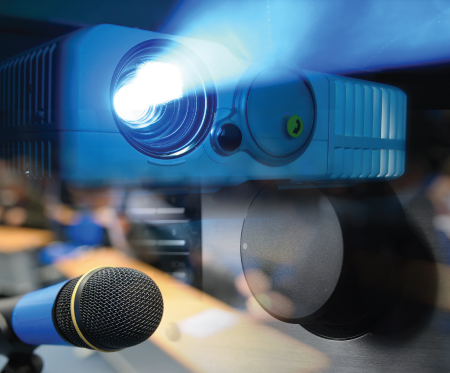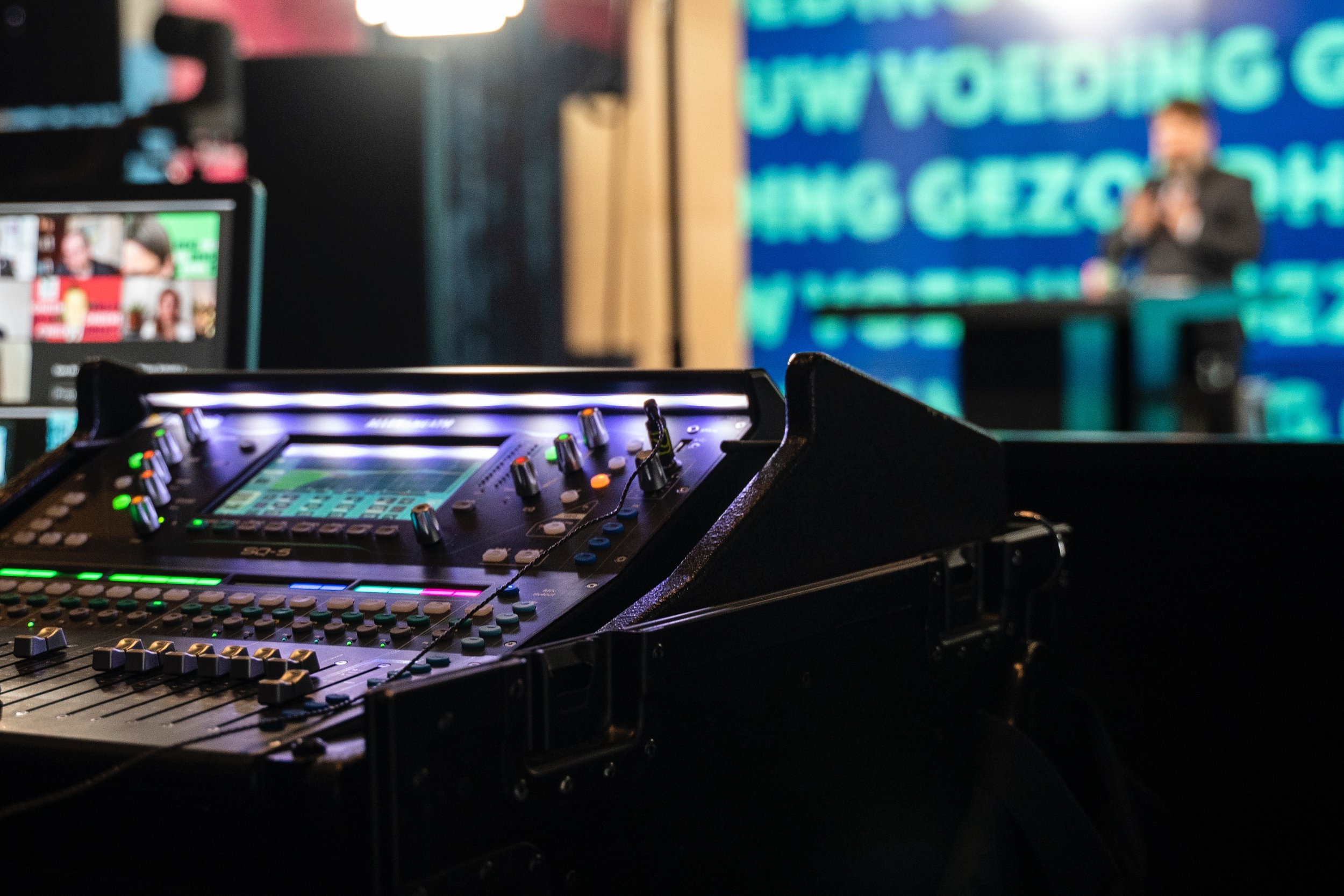How audio visual charlotte nc elevates guest participation through technology
Recognizing the Addition of Audio Visual Innovation in Today's Educational Environments
The assimilation of audio-visual technology in instructional settings has actually transformed the mentor and learning procedure. Educators now have accessibility to devices that accommodate various finding out styles, enhancing trainee engagement and cooperation. However, the unification of these technologies provides both possibilities and challenges. Understanding how to successfully carry out these devices is essential. What methods can educators use to make the most of the advantages of audio-visual innovation in their class?
The Advancement of Audio-Visual Innovation in Education And Learning
As educational needs progressed over the decades, audio-visual innovation underwent significant changes that reshaped the knowing environment. Tools such as film projectors and slide programs were the key means of integrating visual components right into classrooms. These early technologies offered teachers with the ability to present info dynamically, yet they were limited in ease of access and interactivity.
With the arrival of videotape recorder in the 1970s, classrooms began to include recorded lessons, expanding the extent of educational sources. The introduction of desktop computers in the 1980s additional reinvented this landscape, enabling the production of multimedia discussions and interactive knowing experiences.
The increase of the internet in the 1990s noted an essential moment, enabling real-time access to a wealth of audio-visual products. Today, digital tools such as interactive white boards and online discovering platforms proceed to enhance the academic experience, cultivating interaction and collaboration amongst learners.
Advantages of Audio-Visual Equipment for Diverse Knowing Styles
Audio-visual devices play an important duty in satisfying varied understanding designs by boosting visual discovering and boosting acoustic engagement. By including pictures, video clips, and audio, these technologies produce an even more comprehensive instructional setting. This complex technique enables educators to resolve the different preferences and requirements of trainees efficiently.
Enhancing Visual Learning
Engagement in the understanding procedure is noticeably boosted via using audio-visual tools, satisfying various finding out designs. These tools, such as video clips, infographics, and interactive discussions, offer aesthetic stimulations that aid comprehension and retention. Aesthetic students, in certain, take advantage of the unification of photos and computer animations, which can streamline complex concepts and boost understanding. In addition, audio-visual sources can show real-world applications, making learning a lot more relevant and interesting. By integrating color, movement, and noise, educators can produce a dynamic understanding environment that captures pupils' interest and fosters much deeper cognitive connections. Inevitably, the strategic use audio-visual modern technology not just sustains aesthetic understanding but likewise improves the total instructional experience for varied learners.
Improving Auditory Involvement
A significant advantage of incorporating audio-visual tools in education is their ability to improve acoustic involvement amongst pupils. These tools, which encompass multimedia discussions, podcasts, and interactive audio components, satisfy different discovering designs, particularly profiting auditory students (audio visual charlotte nc). By integrating audio and narration, educators can create immersive experiences that capture students' focus and enhance understanding. This engagement is important, as it promotes a deeper understanding of the material and advertises retention. Furthermore, audio-visual tools can facilitate joint knowing environments, motivating trainees to join conversations and share their insights. Inevitably, the consolidation of audio-visual modern technology not only sustains auditory involvement but also enriches the general educational experience, making finding out more dynamic and effective for all students
Enhancing Engagement With Interactive Discovering

Gamification aspects, such as tests and simulations, can enhance motivation and retention, making learning a lot more satisfying and reliable. These methods not just boost cognitive interaction but additionally deal with varied discovering designs, making sure that all trainees can get involved meaningfully. Because of this, interactive knowing environments foster a feeling of neighborhood and belonging, inevitably leading to enhanced scholastic results. Via the integration of audio visual innovation, instructors can transform typical classrooms right into lively spaces where trainees flourish and actively form their academic journeys.
Connecting Concept and Exercise With Multimedia Resources
Multimedia resources function as an important web link in between academic concepts and practical application in educational settings. By improving interaction, helping with collaborative understanding experiences, and supporting diverse knowing designs, these tools create an extra inclusive and dynamic learning setting - audio visual charlotte nc. This approach not only cultivates much deeper understanding but likewise prepares students for real-world challenges

Enhancing Engagement Via Multimedia
Engagement in academic settings significantly increases when trainers incorporate multimedia resources right into their mentor approaches. Making use of videos, podcasts, and interactive presentations improves the discovering experience, allowing trainees to get in touch with the product on several degrees. Multimedia sources provide to numerous discovering designs, providing visual, auditory, and kinesthetic stimulations that can hold trainees' focus more successfully than conventional lecture approaches. Furthermore, these sources can streamline intricate principles, making them a lot more available and memorable. By incorporating multimedia, teachers can create a dynamic class setting that fosters interest and motivates students. Ultimately, the strategic usage of audio-visual modern technology offers to bridge the gap in between academic understanding and useful application, enriching the instructional experience for both teachers and pupils.
Helping With Collaborative Discovering Knowledge
Countless researches indicate that collective discovering experiences markedly improve pupil end results when integrated with multimedia resources. Multimedia devices facilitate interaction amongst pupils, allowing them to involve in analytic and essential assuming jointly. By using video conferencing, joint systems, and interactive presentations, instructors produce environments helpful to synergy and shared understanding. These innovations enable students to interact their ideas efficiently and get prompt feedback, fostering a deeper understanding of the subject. On top of that, multimedia resources can present intricate principles in even more absorbable styles, advertising discussion and cooperation. As a result, the combination of collaborative understanding and audio-visual technology not just improves the instructional experience yet also prepares trainees for real-world synergy dynamics, stressing the value of participation and cumulative understanding building.
Sustaining Diverse Knowing Styles
While typical mentor methods usually deal with a restricted series of discovering preferences, the combination of audio-visual modern technology offers a much more comprehensive strategy to education. By using multimedia resources such as video clips, interactive simulations, and digital discussions, educators can resolve various finding out styles, consisting of aesthetic, acoustic, and kinesthetic. This adaptability permits set apart instruction, allowing pupils to involve with content in means that resonate with their individual preferences. In addition, audio-visual devices can assist in much deeper understanding by supplying numerous depictions of intricate ideas. As an outcome, students that may deal with conventional approaches can find alternate pathways to success, cultivating a much more equitable understanding environment that supports scholastic achievement for all students.
Difficulties in Carrying Out Audio-Visual Innovation
Although audio-visual technology holds fantastic assurance for boosting academic experiences, its implementation usually runs into significant obstacles. One main concern is the economic burden related to acquiring and preserving such tools, which can stress budget plans, especially in underfunded organizations. Furthermore, inadequate training for teachers can impede reliable integration, leaving them ill-prepared to make use of the modern technology fully. Technical issues, such as software program malfunctions and compatibility issues, might likewise interfere with lessons and irritate both educators and pupils. Differing degrees of student accessibility to technology outside the class can develop disparities in discovering opportunities. The capacity for over-reliance on modern technology may detract from crucial training methods, inevitably restricting the instructional experience. Addressing these challenges check here calls for a comprehensive approach, including appropriate funding, expert advancement, and equitable accessibility to resources, to assure that audio-visual technology can be leveraged properly in today's educational setups.
Ideal Practices for Integrating Innovation in the Classroom

In addition, promoting an interactive environment with joint tools motivates student engagement and engagement. Making use of varied audio-visual resources deals with various finding out designs, fitting aesthetic, acoustic, and kinesthetic students. On a regular basis evaluating the impact of innovation on trainee learning assists instructors fine-tune their approaches and adapt to changing requirements. Entailing pupils in the choice of modern technology advertises ownership and inspiration. By sticking to these finest practices, educators can create a dynamic classroom ambience that efficiently integrates innovation and improves the academic experience for all pupils.
The Future of Audio-Visual Technology in Education And Learning
As class significantly welcome modern technology, the landscape of audio-visual tools in education remains to develop (audio visual charlotte nc). Future advancements are anticipated to concentrate on better interactivity and personalization, permitting instructors to tailor finding out experiences to private student demands. Advancements such as increased truth (AR) and digital reality (VIRTUAL REALITY) will likely supply immersive learning atmospheres, boosting pupil engagement and understanding
Fabricated knowledge (AI) is poised to play a considerable function in audio-visual innovation by supplying real-time comments and adaptive discovering paths. This integration may help instructors identify and deal with student obstacles better. Cloud-based systems will certainly promote simpler accessibility to resources and cooperation amongst pupils and instructors, regardless of place.
Along with these technical advances, professional advancement for teachers will be crucial, guaranteeing they are furnished to use these tools successfully. Overall, the future of audio-visual modern technology in education and learning guarantees to develop more dynamic, inclusive, and impactful discovering experiences.
Frequently Asked Concerns
How Can Teachers Select the Right Audio-Visual Tools for Their Class?
Selecting appropriate audio-visual tools calls for educators to analyze their instructional goals, consider student needs, evaluate available innovation, and seek referrals from peers or experts, making sure tools effectively boost learning and engagement within their specific classroom setting.
What Budget plan Considerations Are There for Executing Audio-Visual Technology?
Spending plan factors to consider for executing audio-visual innovation consist of first acquisition expenses, upkeep expenses, training for team, and possible software application licensing charges. In addition, lasting investment in updates and substitutes ought to additionally be factored right into economic preparation.
Exist Certain Training Resources for Teachers on Audio-Visual Tools?
Numerous organizations provide training sources for instructors on audio-visual devices, including online training courses, workshops, and educational overviews. These resources intend to improve teachers' abilities and self-confidence in efficiently incorporating modern technology into their mentor techniques.
Just how Do We Measure the Efficiency of Audio-Visual Modern Technology in Knowing?
Gauging the efficiency of audio-visual modern technology in discovering includes reviewing student involvement, comprehension, retention rates, and general scholastic performance. Surveys, analyses, and empirical researches can give beneficial insights into its influence on educational outcomes.
What Are Usual False Impressions Concerning Audio-Visual Technology in Education?
Common mistaken beliefs concerning audio-visual technology in education consist of the belief that it assures involvement and finding out end results, along with the presumption that all trainees profit equally, overlooking private discovering preferences and requirements.